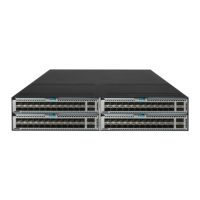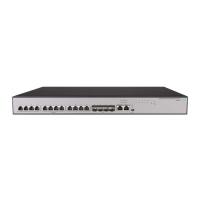202
Step Command Remarks
6. Apply an export routing
policy.
export route-policy
route-policy
By default, routes to be advertised
are not filtered.
The specified routing policy must
have been created.
For information about routing
policies, see Layer 3—IP Routing
Configuration Guide.
7. Apply a tunnel policy to
the VPN instance.
tnl-policy
tunnel-policy-name
By default, only one tunnel is
selected (no load balancing). The
LSP tunnel takes precedence
over the CR-LSP tunnel.
The specified tunnel policy must
have been created.
For information about tunnel
policies, see "
802H
Configuring tunnel
policies."
236BConfiguring routing between a PE and a CE
You can configure static routing, RIP, OSPF, IS-IS, EBGP, or IBGP between a PE and a CE.
466BConfiguring static routing between a PE and a CE
Step Command Remarks
1. Enter system view.
system-view
N/A
2. Configure a static
route for a VPN
instance.
ip route-static
vpn-instance
s-vpn-instance-name dest-address
{ mask-length | mask } { interface-type
interface-number [ next-hop-address ]
|next-hop-address [
public
] [
track
track-entry-number ] |
vpn-instance
d-vpn-instance-name next-hop-address
[
track
track-entry-number ] } [
permanent
]
[
preference
preference ] [
tag
tag-value ]
[
description
text ]
By default, no static route is
configured for a VPN
instance.
Perform this configuration on
the PE. On the CE, configure
a common static route.
For more information about
static routing, see Layer
3—IP Routing Configuration
Guide.
467BConfiguring RIP between a PE and a CE
A RIP process belongs to the public network or a single VPN instance. If you create a RIP process
without binding it to a VPN instance, the process belongs to the public network.
To configure RIP between a PE and a CE:
Step Command Remarks
1. Enter system view.
system-view
N/A
2. Create a RIP process for a
VPN instance and enter RIP
view.
rip
[ process-id ]
vpn-instance
vpn-instance-name
Perform this configuration on the
PE. On the CE, create a common
RIP process.
3. Enable RIP on the interface
attached to the specified
network.
network
network-address
By default, RIP is disabled on an
interface.

